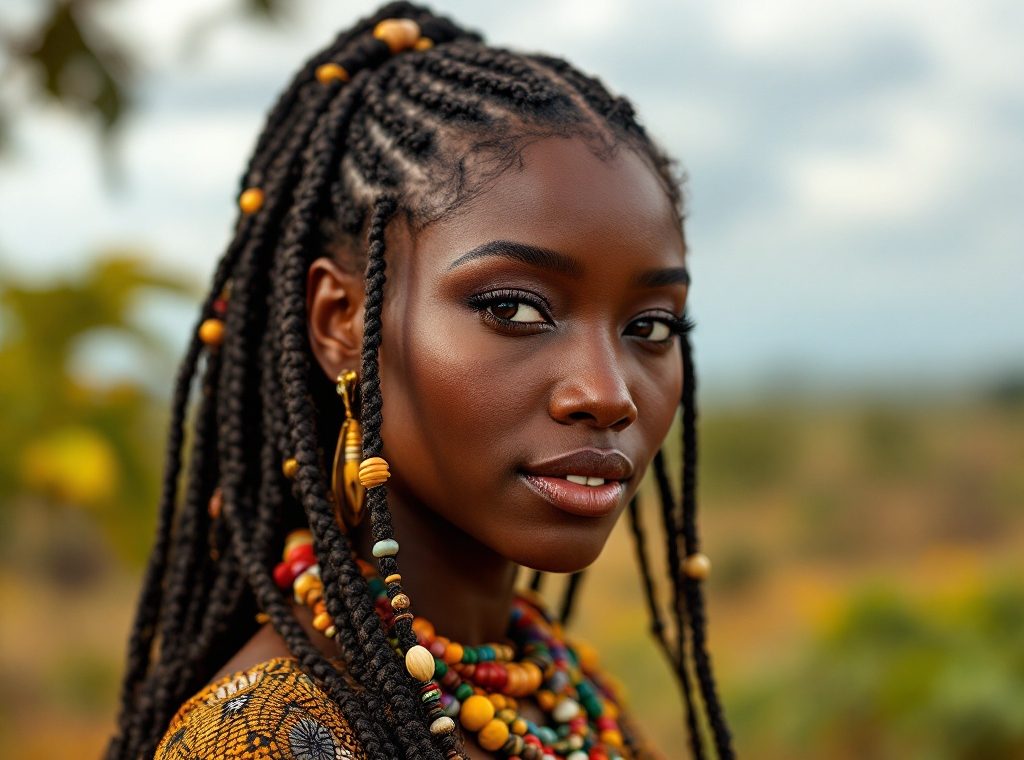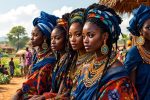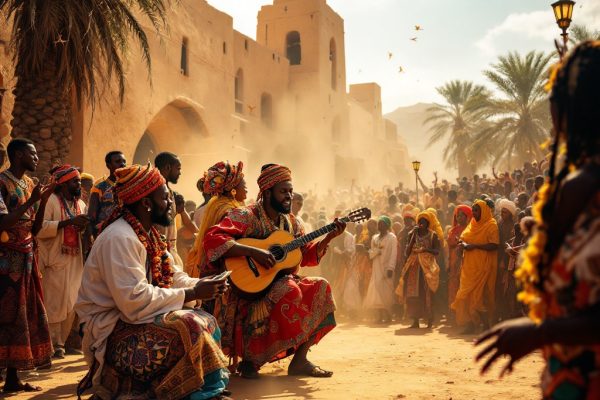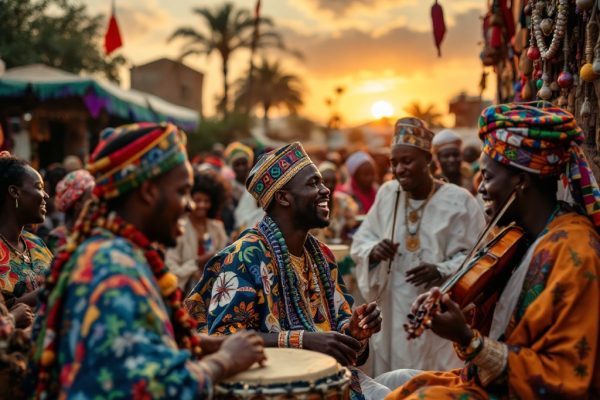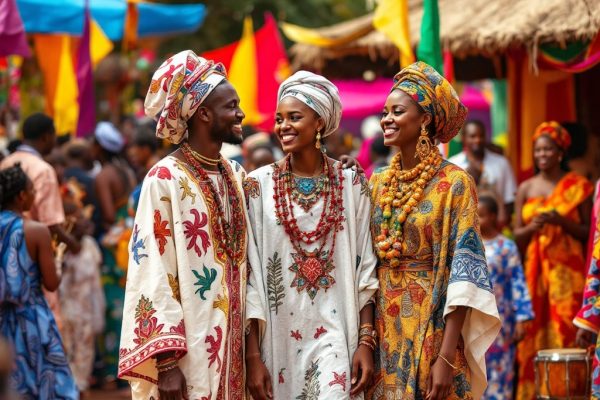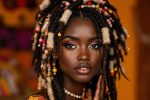What Are Fulani Braids: The History and Meaning Behind This Hairstyle
Discover the captivating world of Fulani braids, a mesmerizing hairstyle steeped in West African tradition. More than just a style, these intricate braids symbolize wealth, status, and heritage within the Fulani culture. From their unique cornrow patterns to the ornate beads and shells, Fulani braids offer a stunning way to express your individuality while protecting your natural hair. Explore the rich history, diverse styling options, and cultural significance of Fulani braids, and find inspiration for your next stunning look.
Important information
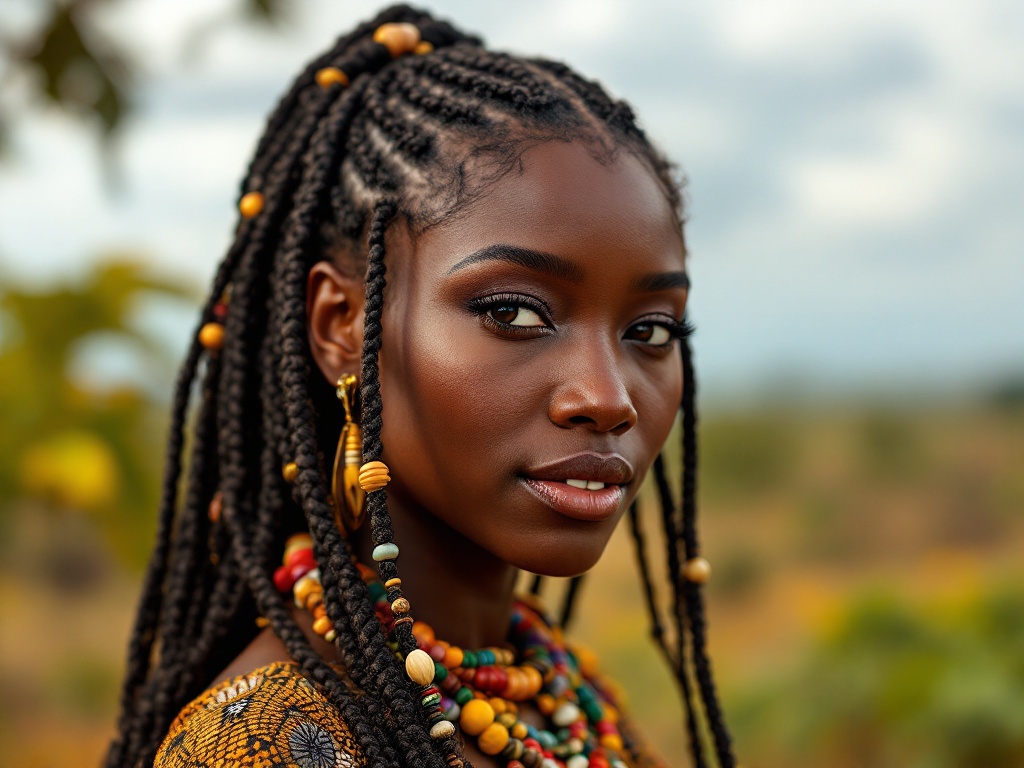
- Fulani braids are a protective style from West Africa, using cornrows and often box braids, adorned with beads and shells.
- They hold cultural significance, representing identity, heritage, and historically, wealth and social standing within the Fulani community.
- A key feature is a central cornrow, often with side braids and a wrapped braid, creating intricate patterns.
- Modern celebrities have embraced Fulani braids, increasing their popularity and contributing to the natural hair movement.
- They offer versatile styling options and serve as a powerful form of self-expression and cultural pride.
Introduction to Fulani Braids
Fulani braids, a protective hairstyle originating from the Fulani people of West Africa and the Sahel, feature a signature cornrow down the center of the head. Often, the style starts with cornrows at the front, transitioning into box braids at the back. This braiding technique protects hair from heat and combing damage. Beads, shells, and other embellishments often adorn Fulani braids.
What Are Fulani Braids?
Originating from the Fulani people of West Africa, Fulani braids offer a unique protective style. They cleverly blend cornrows braided close to the scalp, often in elaborate designs, with extensions. Beads and cowrie shells are common additions, along with other adornments that further enhance their distinctive appearance.
Origin and Cultural Significance
Originating with the Fula people, Fulani braids hold deep cultural significance in West Africa, representing identity, heritage, and social standing within the community.
History and Meaning of Fulani Braids
Fulani braiding is more than a hairstyle; it’s a powerful symbol of cultural continuity and ancestral pride, passed down through generations. These intricate designs reflect deep roots within the Fulani community, often signifying wealth and marital status. Historically, elaborate braids and adornments indicated high social standing, with complexity directly correlating to perceived status. This beautiful expression of identity connects individuals to their African heritage, fostering a strong sense of belonging.
Traditional Braiding and Ancestral Roots
Fulani braiding is a centuries-old tradition of the Fula people, practiced throughout West Africa and the Sahel. These intricate hairstyles are more than just adornment. They communicate social status, age, marital status, and even tribal affiliation. This ancient practice reveals the Fula people’s profound cultural heritage and the significance of hair within their society.
Symbolism of Wealth and Marital Status
Fulani braids are more than just a hairstyle; they’re a powerful statement about a woman’s place in society. Intricate designs often symbolize wealth, while elaborate styles can indicate marriage. Simpler braids might mark a young girl’s life stage. Within Fulani culture, these braids showcase a woman’s beauty and her social standing.
Cultural Pride and African Heritage
Fulani braids powerfully symbolize cultural pride and African heritage, deeply connecting wearers to their ancestral roots and traditions. These intricate styles showcase the beauty and diversity of African hair artistry and cultural expression.
Designs and Styling of Fulani Braids
Fulani braids are characterized by unique patterns, typically featuring a central cornrow flanked by side braids flowing in opposite directions, often accented with a wrapped braid. Beads, shells, or metallic rings frequently adorn these braids, adding to their visual appeal. Popular styling techniques include intricate close-to-the-scalp braiding. Extensions can provide extra length for added versatility. Updos and ponytails are also achievable with this adaptable braiding style.
Unique Patterns and Features
The Fulani braid style centers around a cornrow braided down the middle of the head. This cornrow serves as the base for intricate patterns created by braiding hair of varying thicknesses in different directions. The combination of thin and thick braids adds a visual texture, often complemented by delicate side braids that either frame the face or cascade freely. A single braid is often wrapped around the head, extending from front to back, to further enhance the style’s unique look.
Incorporating Beads, Shells, and Ornaments
Fulani braids are often adorned with beads, cowrie shells, and metal rings. These embellishments symbolize wealth, status, and beauty. Furthermore, they serve as a powerful visual expression of Fulani culture, showcasing pride and heritage.
Popular Styling Techniques
Fulani braids offer versatile styling options. Create a sleek ponytail, a chic bun, or opt for a relaxed half-up, half-down look. Intricate designs with beads and curls add a unique, personalized touch.
Fulani Braids in Contemporary Culture
Fulani braids have become a cultural mainstay, surging in popularity due to celebrities and fashion icons embracing the style. This has significantly boosted the natural hair movement, as these braids offer a powerful means of self-expression, reflecting heritage and showcasing individual style. Fulani braids transcend mere hairstyle; they are a statement.
Influence on the Natural Hair Movement
Fulani braids became a cornerstone of the natural hair movement, offering a protective style that empowered individuals to embrace their natural textures. This intricate braiding technique, often adorned with beads and other accessories, quickly gained popularity, spreading from African communities to a global audience. While visually appealing, it’s crucial to ensure the braids aren’t installed too tightly, as this can lead to hair damage and even traction alopecia. Proper installation is essential for healthy hair maintenance.
Adoption by Celebrities and Fashion Icons
Influential artists like Alicia Keys, Beyoncé, and Rihanna have embraced Fulani braids, significantly boosting the style’s popularity. These stars have showcased the braids’ versatility, demonstrating their adaptability for various hairstyles. This visibility has undoubtedly influenced hair trends. However, it’s crucial to acknowledge the braids’ rich cultural heritage, originating with the Fulani people of West Africa. The adoption of this traditional hairstyle by prominent figures helps share its cultural significance and fosters greater appreciation.
Fulani Braids as a Form of Self-Expression
Fulani braids are a powerful expression of individuality and cultural pride, allowing wearers to celebrate their heritage while making a unique fashion statement. Their versatility offers numerous styling options, further enhancing self-expression. Adding beads, shells, and other ornaments elevates their expressive potential, making Fulani braids a popular choice for showcasing one’s unique identity.

